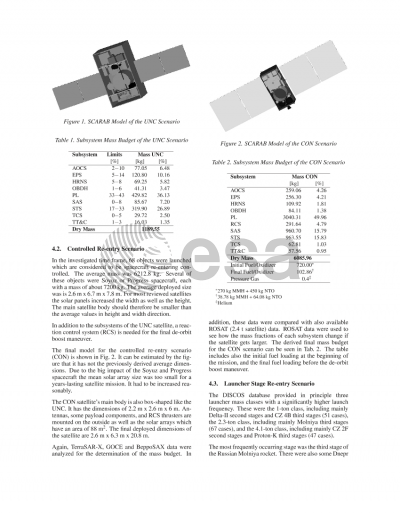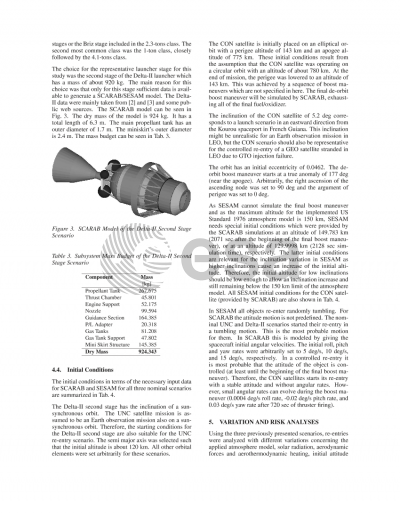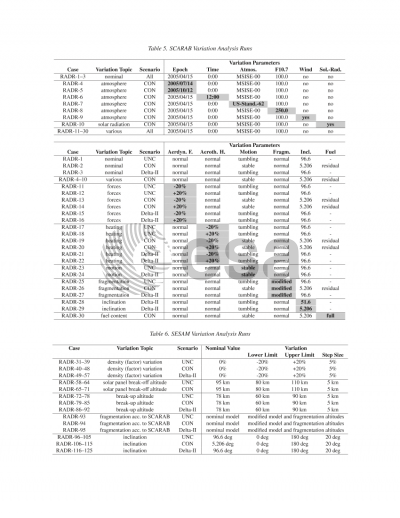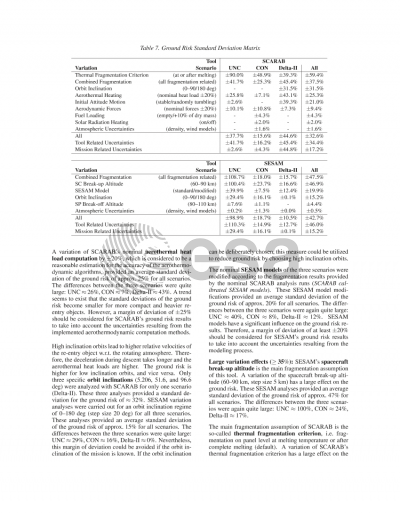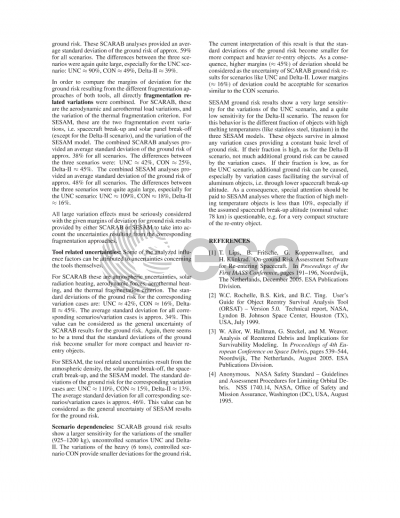Document details

Abstract
From 2007 to 2008, Hypersonic Technology Göttingen (HTG) worked on a study called Risk Assessment for Destructive Re-entry (RADR). The main purposes of this study were to identify and to quantify the inherent uncertainties of re-entry analysis tools, and to provide possible risk mitigation measures. For these purposes, three basic risk scenarios were specified: a 1-ton-class satellite without propulsion for uncontrolled re-entry, a 6-ton-class satellite with propulsion and the capability to perform a controlled re-entry, and a 1-ton-class launcher upper stage re-entering uncontrolled. Based on the identified uncertainty parameters, variation analyses were conducted for these scenarios with the two ESA tools for re-entry analysis SCARAB (Spacecraft Atmospheric Reentry and Aerothermal Breakup) and SESAM (Spacecraft Entry Survival Analysis Module). This paper describes the major results of the RADR study.
Preview


